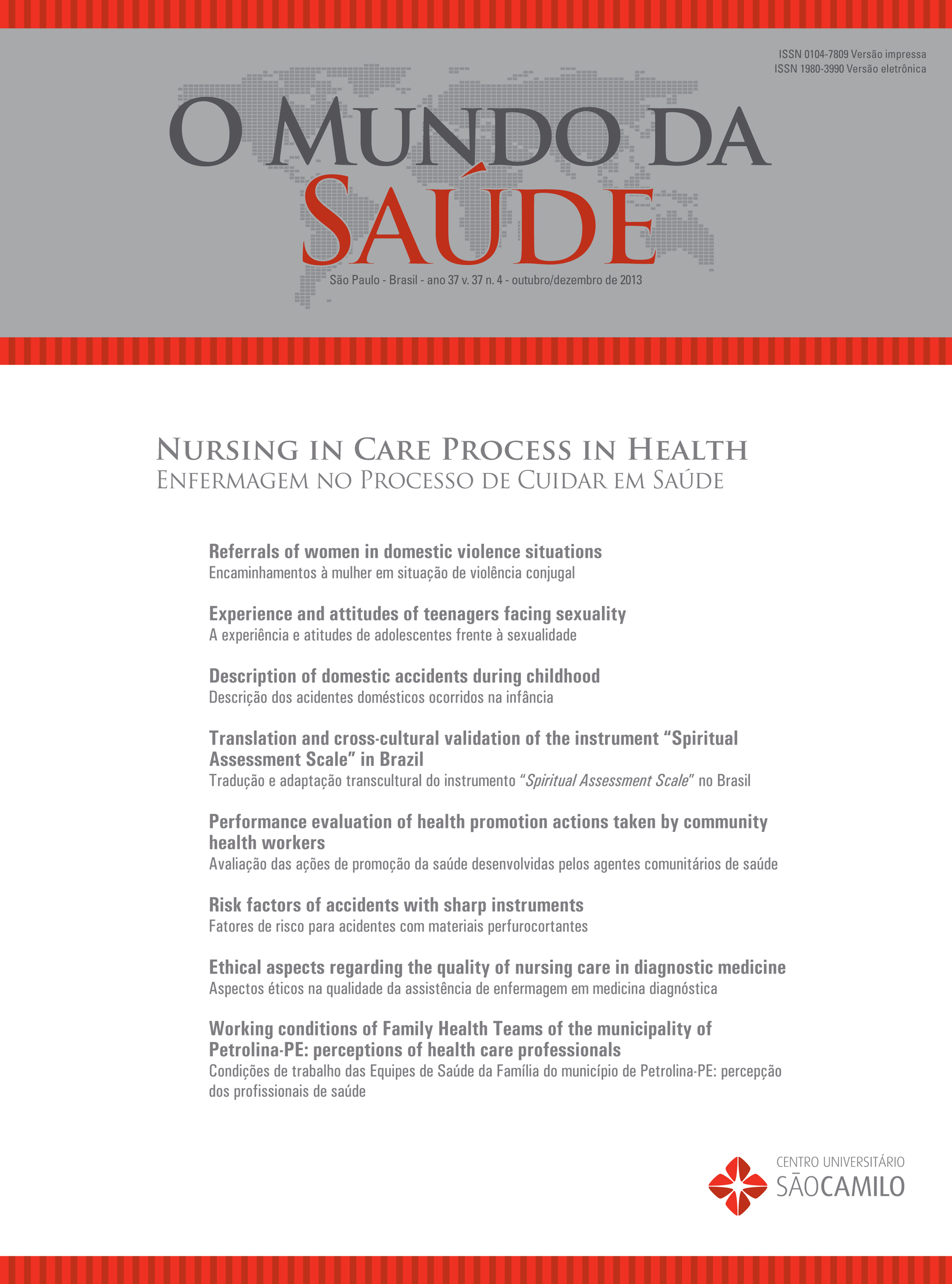Evidence on the best chlorhexidine concentration to perform oral hygiene: meta-analysis
DOI:
https://doi.org/10.15343/0104-7809.2013374464471Keywords:
Oral Hygiene, Chlorhexidine, Pneumonia, Infection Control, NursingAbstract
Although scientific literature has demonstrated the relevance of oral hygiene with chlorhexidine in preventing ventilation-
-associated pneumonia, there is a wide variation of concentrations, frequency and techniques when using the antiseptic.
The aim of this research was to assess the best chlorhexidine concentration used to perform oral hygiene to prevent ventilation-
associated pneumonia. A systematic review followed by four meta-analysis using chlorhexidine concentration as
criterion was carried out. Articles in English, Spanish or Portuguese indexed in the Cochrane, Embase, Lilacs, PubMed/Medline
and Ovid electronic databases were selected. The research was carried out from May to June 2011. The primary outcome
measure of interest was ventilation-associated pneumonia. Ten primary studies were divided in four groups (G1-4),
based on chlorhexidine concentration criterion. G1 (5 primary studies, chlorhexidine 0.12%) showed homogeneity among
studies and the use of chlorhexidine represented a protective factor. G2 (3 primary studies, chlorhexidine 0.20%) showed
heterogeneity among studies and chlorhexidine did not represent a protective factor. G3 (2 primary studies, chlorhexidine
2,00%) showed homogeneity among studies and the use of chlorhexidine was significant. G4 (10 primary studies with
different chlorhexidine concentrations) showed homogeneity among studies and the common Relative Risk was significant.
Statistic analyses showed a protective effect of oral hygiene with chlorhexidine in preventing ventilation-associated
pneumonia. However, it was not possible to identify a standard to establish optimal chlorhexidine concentration.






























